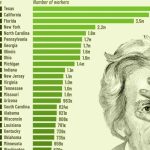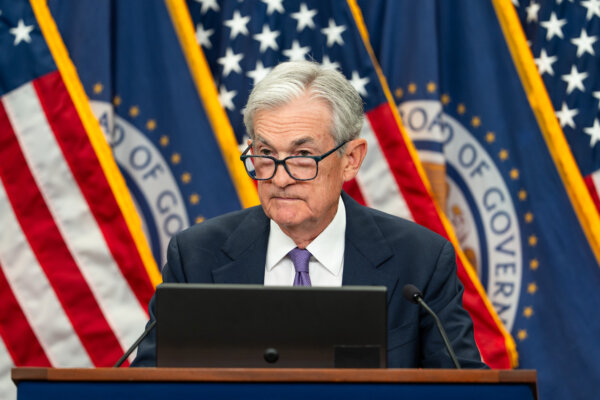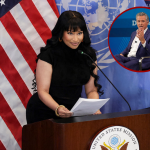‘Patients lose eyesight after using Indian-made eyedrops. 5-year-old child dies of kidney failure after taking cough syrup laced with industrial toxins. Parents open their children’s antibiotic and find worms floating inside’
![]()
It’s every parent’s nightmare: Racing their child to the emergency room, only to learn that the cough syrup they gave their son or daughter, rather than relieving their cough, instead had poisoned their child. It’s the kind of horror story no one expects, especially from something made for children. Yet it accurately reflects a grim reality of today’s global pharmaceutical trade.
In this case, a drug manufacturer in India decided to swap safe ingredients for cheaper, toxic chemicals, the same substances used in engine coolant, brake fluid and antifreeze. As horrifying as that story sounds, there’s an even more unsettling truth: The same country responsible for those deadly syrups also produces a huge share of the medicines sitting in American homes and hospitals.
India now dominates the global generic drug market, supplying the majority of the low-cost prescriptions Americans take every day.
Behind that dominance lies a disturbing pattern of fraud, contamination and neglect. Factories caught falsifying test results, skipping safety checks or cutting corners with unsafe inputs have continued shipping products abroad with little interruption – and even less accountability.
For American families, that means the same system that poisoned children overseas is the one filling pharmacy shelves across the United States, a system propped up by loopholes, blind trust and an unhealthy dependence on foreign supply chains that prize volume and profit over human life.
How India became the pharmacy of the world
“Fifteen years ago, the U.S. Food and Drug Administration recognized India’s strategic importance to the U.S. – and to the agency in fulfilling our mission – and opened one of the FDA’s first foreign offices in India. Since that time, the Indian medical products sector has continued to grow as has our reliance on medical products made in India.. India sometimes describes itself as the ‘pharmacy to the world.'” – Robert M. Califf, M.D., Commissioner of Food and Drugs during the Biden administration
For years, India has branded itself as the “pharmacy of the world,” a title repeated by politicians, trade lobbyists and global institutions. The narrative paints India as a benevolent supplier of affordable medicine to developing nations and a trusted producer of lifesaving generics for the West. But behind that reputation lies a far darker reality, one built not on innovation or quality, but on cost-cutting, corruption and corner-cutting.
India’s rise in pharmaceuticals was not driven by breakthroughs in science or superior manufacturing. It began when India rewrote its patent laws in the 1970s, allowing domestic firms to reverse-engineer Western drugs without licensing fees. That loophole fueled an explosion of generic production: cheap, fast and profitable. When international patent protections were later restored in the U.S. 2005, Indian manufacturers pivoted again, flooding foreign markets with off-patent generics while undercutting competitors through low labor costs, weak oversight and questionable testing practices.

India exports of pharmaceutical products to United States
Today, India produces about 20% of the world’s generic medicines and nearly half of all generics sold in the United States. But low prices come with high risk. A landmark study found Indian-made generics had a 54% higher risk of serious side effects compared to U.S.-produced equivalents.

All generic drugs are not equal
The results have been nothing short of deadly. Indian manufacturers have repeatedly been tied to contamination, falsified test data and toxic ingredients, from Ranbaxy’s $500 million fraud case to the cough syrup poisonings. Investigations by the World Health Organization and United Nations Office on Drugs and Crime have traced these tragedies to systematic negligence, criminal substitution of ingredients and the failure of regulators to act.
Despite this record, India continues to market itself as the “pharmacy of the world.” And that global branding becomes far more consequential when set against America’s growing dependence on overseas supply.
America’s medicine cabinet is not made in America
Over the past two decades, America’s medicine chest has quietly been moved offshore. The United States is now dangerously dependent on foreign manufacturers for the vast majority of its pharmaceuticals, relying heavily on supply chains controlled by other nations. Since 2000, pharmaceutical imports have surged to unprecedented levels: By 2024, the U.S. brought in more than 828,000 metric tons of drugs and ingredients, over seven times the volume imported at the start of the century.

This surge is not about higher medical needs. It is the product of a failed trade and regulatory model that has sacrificed American manufacturing for short-term profits and cheaper foreign supply with higher risk. The result is a $118 billion pharmaceutical trade deficit in 2024 and the steady erosion of national control over one of America’s most vital industries.
The United States, once the global leader in medical innovation and quality, now relies on foreign powers to make its citizens’ medicines.

Two countries, China and India, dominate the American drug supply. Together they account for 70 to 80 percent of the generics and key ingredients in U.S. medicine cabinets. India alone produces nearly half of all finished generics sold in this country, while China supplies many of the raw compounds used to make them. This dependency doesn’t just threaten America’s health; it hands foreign governments and corporations enormous leverage over U.S. national security.
The cost of cutting corners: Fraud, deaths and denial
The scale of dependence would be less alarming if quality were assured. In February, when researchers revealed that Indian-made generic drugs carried a significantly higher risk of serious side effects – including hospitalization, disability and death – than their U.S.-manufactured equivalents, the industry’s first reaction was denial.

India’s pharmaceutical lobby immediately challenged the findings. Industry representatives accused the researchers of “bias,” arguing the analysis unfairly targeted India’s global role while insisting its products met “international quality standards.” Yet, while the industry defended its image, the actual evidence at home and abroad told a much darker story.

Fact: Over recent years, Indian-made cough syrups have been linked to hundreds of children’s deaths across multiple continents. The World Health Organization has documented more than 300 child fatalities caused by syrups laced with diethylene glycol (DEG) and ethylene glycol (EG), industrial toxins used in antifreeze.

Between 2022 and 2023, fatal outbreaks were reported in The Gambia, Uzbekistan and Indonesia. In 2025, new deaths in the large Indian state Madhya Pradesh were traced to syrups containing nearly 500 times the allowable diethylene glycol limit.
Each time, regulators and manufacturers called the tragedies “isolated incidents.” But repetition reveals a pattern: Rather than acknowledge systemic failure, authorities compartmentalized the crisis, treating each cluster of deaths as unrelated. The strategy kept headlines small, tempered international outrage and allowed exports to continue uninterrupted.
The pattern looks less like bureaucratic incompetence and more like strategic containment, a deliberate effort to protect India’s global image as the “pharmacy of the world.”

As India’s Biden-era Health Minister Dr. Mansukh Mandaviya declared, “The Indian pharma industry should strive to maintain the reputation of India as the ‘Pharmacy of the World’ … Indian pharma industry never compromises with the quality of the medicines.”
Yet data from India’s own regulators contradict that claim. Over 36% of Indian drug-manufacturing plants inspected since mid-2023 were ordered to shut due to non-compliance.

Despite this, the government continues to celebrate export growth while quietly ignoring the negligence and corruption within the pharmaceutical sector documented by international agencies. The same companies implicated in earlier poisonings remain operational, exporting to dozens of countries under the banner of “affordable medicine.”

This reveals the true nature of India’s pharmaceutical problem: not a lack of awareness, but a lack of accountability. When lives are lost, the response is rarely reform – rather, it’s public relations. At best, the government’s actions remain reactive: bans, recalls and arrests occur only after fatalities make global news. As Udaya Bhaskar of the All India Drugs Control Officers bluntly admitted,
“It’s not the government’s job to test every batch. That responsibility lies with the manufacturer.”

In 2024, India’s top regulator declared the crisis “under control.” Yet within months, that assurance unraveled as new child deaths emerged and the owner of Sresan Pharmaceuticals was arrested and the World Health Organization issued a fresh global alert warning that contaminated syrups from multiple Indian companies posed a “serious risk to public health.”
Yet India’s response cycle of deny, deflect and delay continued.

The FDA’s complicity and India’s embedded influence
A June 2025 ProPublica investigation, “Threat in Your Medicine Cabinet: The FDA’s Gamble on America’s Drugs,” shows how the Food and Drug Administration repeatedly allowed overseas factories, largely in India, to ship products even after serious manufacturing and quality failures.
More than 20 plants under U.S. import bans for contamination, falsified records and filthy labs received exemptions that let at least 150 drugs or ingredients to keep flowing into the American market: One from China, one from Hungary – and 148 from India.

Inspectors found metal shavings on production lines, raw materials contaminated with “extraneous matter” and “blackish” vials of injectable medication that still reached U.S. pharmacies. Yet the FDA, pressured by industry lobbyists and afraid of drug shortages, looked the other way. Instead of sounding the alarm, it kept the public and even Congress in the dark.
Adverse-event reports linked to these drugs included hospitalizations and deaths, but the agency rarely investigated.
What makes the crisis even more dangerous is the degree to which Indian pharmaceutical multinationals have embedded themselves inside America. They operate embedded U.S. subsidiaries with sales headquarters, policy offices and manufacturing plants that give them a foothold in America’s regulatory ecosystem. Among the most prominent are Dr. Reddy’s, Sun Pharma (including legacy Ranbaxy and Ohm), Lupin, Zydus, Aurobindo (through Aurolife and Aurobindo USA), Intas (via Accord Healthcare), Cipla and Glenmark. Most anchor their operations in New Jersey, Maryland and North Carolina.
These firms exert influence through direct federal lobbying and powerful trade groups such as the Association for Accessible Medicines (AAM), the U.S.-India Business Council (USIBC) and the U.S. India Strategic Partnership Forum (USISPF).

Shockingly, 13 of 23 board seats – more than half of the Association for Accessible Medicines leadership – are held by executives of companies owned or controlled by Indian parent corporations. These same Indian firms supply roughly 40-50% of the U.S. generic drug market, meaning they have direct influence over both production and policy advocacy in Washington through the AAM.
The overlap illustrates a significant conflict of interest: Companies repeatedly cited for safety violations, contamination and FDA noncompliance abroad are also shaping the U.S. generic drug policy agenda domestically.
This network grants them oversized market power, since American regulators and hospitals rely on their products, yet they also help shape the very rules meant to govern them. As a result, when quality or life-and-death safety concerns threaten profits, enforcement is easily softened and accountability delayed.
The ProPublica investigation exposes a dangerous cycle: The FDA, pressured to avoid shortages and influenced by industry ties, grants waivers to repeat violators; corporations, backed by Washington lobbyists, continue shipping questionable products – and American patients bear all the risk. The oversight process, once designed to protect public health, has become entangled in the same global networks that profit from America’s dependency. Each “exemption” and import waiver further entrenches a system wherein profit outweighs safety, dependency overrides accountability and foreign influence seeps into the very heart of U.S. health policy.

U.S. dangerously reliant on high-risk imported drug supply
The human cost of outsourcing health
Consider these real-life nightmares: A young mother loses her life after receiving a contaminated IV infusion manufactured in India. Patients lose their eyesight after using Indian-made eyedrops. A five-year-old child dies of kidney failure after taking cough syrup laced with industrial toxins. Heart patients discover their medication has been recalled because of impurities introduced through contamination during production. Parents opening their children’s antibiotic find worms floating inside.
In these and other documented horror stories tied to Indian pharmaceutical exports over the past several years, each case underscores the same truth: When safety takes a back seat to profit, people die. The promise of affordable medicine becomes meaningless when the cost is measured in human lives.
Rebuilding domestic pharmaceutical production isn’t just sound and necessary economic policy; it’s national security. Closing the $118.3 billion pharmaceutical trade deficit would not only create jobs, it would restore accountability to an industry that should never have been outsourced in the first place.

Indian drugmakers can retain U.S. dominance even with tariffs, says industry body
If America is serious about protecting its citizens’ health, it must reclaim control of its own medicine supply. In the era of MAHA – “Make America Healthy Again” – perhaps the first step is ending dependence on foreign manufacturers whose repeated failures are making many people sicker – not better.











